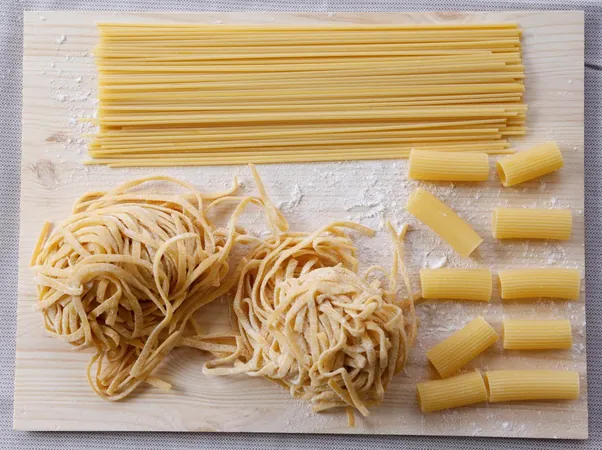
Scientists Craft the World’s Thinnest Spaghetti—And It Could Revolutionize Medicine!
2024-11-21
Author: Jia
Introduction
Researchers at University College London have achieved a culinary breakthrough that both celebrity chefs and Italian grandmothers could only fantasize about: they have created the world's thinnest spaghetti! This groundbreaking achievement, detailed in the journal Nanoscale Advances, showcases strands of starch nanofibers that measure a mere 372 nanometers in diameter—so thin they are invisible to the naked eye and even smaller than some light wavelengths.
Medical Applications
While the idea of "the world's thinnest spaghetti" may raise eyebrows, the implications of this research extend far beyond culinary arts. The unique properties of starch at the nanoscale could have significant applications in the medical field. For example, these ultra-thin nanofibers can be used to develop advanced bandages that not only keep harmful bacteria at bay but also allow necessary moisture to promote healing in wounds. This could lead to more effective treatment options in hospitals and for everyday injuries.
Innovative Production Method
The researchers took an innovative approach by utilizing readily available store-bought flour to create their nanofibers, rather than the complex, energy-intensive process of refining starch from plant cells. They employed a technique called electrospinning, where an electric charge effectively pulls a mixture of flour and liquid through extraordinarily tiny metal holes to form threads measuring just nanometers in width. It's fascinating to think that the same method used to produce this innovative spaghetti is analogous to the traditional extrusion process used for making your favorite types of pasta—just on an unimaginably smaller scale.
Conclusion
This breakthrough not only challenges our perceptions of food and cooking but also points to a future where everyday ingredients might lead to significant advancements in health and technology. As the culinary and scientific worlds continue to merge, who knows what other gastronomic innovations await us? Stay tuned for more incredible discoveries that could change the way we eat and heal!



 Brasil (PT)
Brasil (PT)
 Canada (EN)
Canada (EN)
 Chile (ES)
Chile (ES)
 España (ES)
España (ES)
 France (FR)
France (FR)
 Hong Kong (EN)
Hong Kong (EN)
 Italia (IT)
Italia (IT)
 日本 (JA)
日本 (JA)
 Magyarország (HU)
Magyarország (HU)
 Norge (NO)
Norge (NO)
 Polska (PL)
Polska (PL)
 Schweiz (DE)
Schweiz (DE)
 Singapore (EN)
Singapore (EN)
 Sverige (SV)
Sverige (SV)
 Suomi (FI)
Suomi (FI)
 Türkiye (TR)
Türkiye (TR)